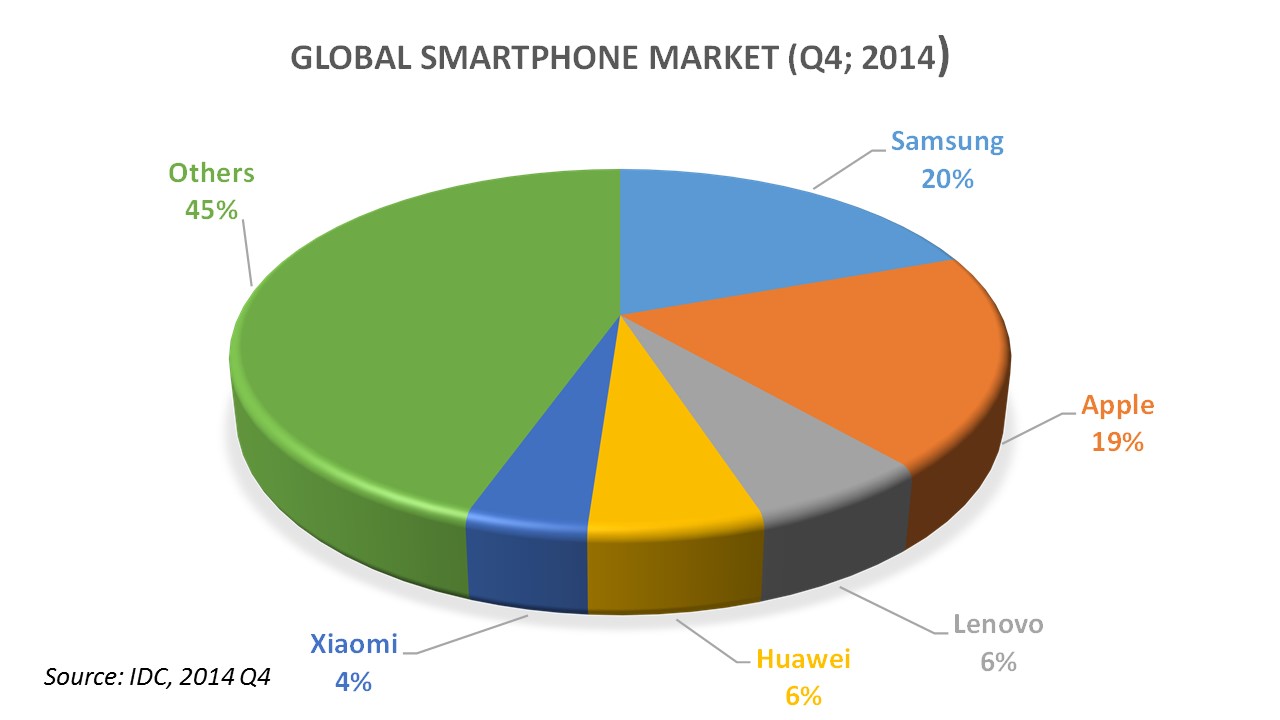GET IN TOUCH
- Please wait...

Since Steve Jobs unveiled the first iPhone in 2007, the global market for smartphones has been growing in leaps and bounds. Due to soaring demand, prices have been going down as manufacturers experienced the benefits of economies of scale. With declining prices, smartphones have become popular within emerging and developing economies. China and India are two growing markets and all major manufacturers are focusing attention on these flagship markets.
Although Apple was initially the market leader, since 2010, Samsung Electronics, a Korea-based conglomerate, had wrested control of the market offering better quality and economic prices. Samsung’s market penetration was particularly strong in Asia with China leading the way. As consumers in emerging markets are price-sensitive, Samsung smartphones proved a better alternative than pricier iPhones.
Over the last year, the smartphone market has undergone rapid changes, especially in the Chinese market where local Xiaomi has established a strong foothold. In the first quarter of 2015, Xiaomi has for the first time taken the pole position in the Chinese market from Samsung. They’re also penetrating the markets in other emerging markets where consumers are keen on a bargain deal.
The figure below portrays the current market share of major smartphone players as of the last quarter of 2014.

Two major changes are causing ripple effects within the market:
The sudden arrival and unprecedented growth of Xiaomi are the first of these two major phenomena. Xiaomi, (literally meaning ‘little rice’), is a company that started as a lean start-up in 2010; yet in three years has evolved to account for 6% of the global 320 million smartphones sold between July and September 2014 (Source: IDC). In the fourth quarter of 2014, Xiaomi fell from third to fifth position. But despite this slight fall in volume from the previous quarter, it posted the largest year-on-year growth of 178.3% among all the leading vendors and currently boasts a $45 billion valuation – courtesy of a solid demand within its home country of China.
Smartphone prices are expected to drop even further in the coming years, according to IDC (International Data Corporation). By 2018, smartphone shipments would hit 1.9 billion units, marking an annual growth rate of just 9.8-percent. Emerging markets, like China and Indonesia, drove the industry’s growth in 2014 and are expected to continue to do so in later years. Penetration by Chinese companies like Lenovo and Xiaomi is expected to increase, especially in developing countries where per capita income is lower and consumers are increasingly cost-conscious. But it is expected that there will always be a market for premium products, so Apple can retain its market share somewhat. All in all, the smartphone industry is experiencing a revolution as newer players emerge with quality products at reasonable prices and formerly weak competitors catch up in sales and profit by launching superior new products.
Our experts can help you solve your unique challenges
Stay up-to-date with our Thought Leadership and Insights